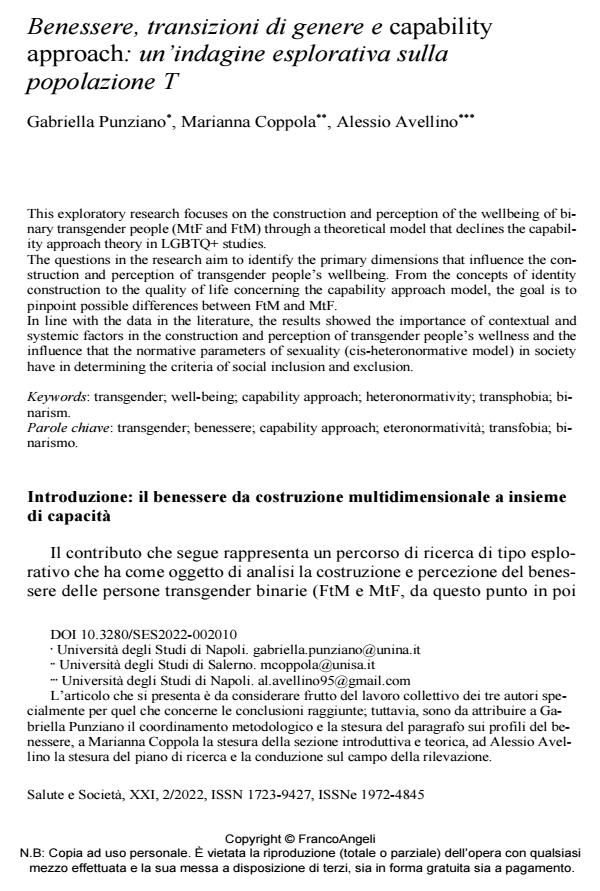Benessere, transizioni di genere e capability approach: un’indagine esplorativa sulla popolazione T
Journal title SALUTE E SOCIETÀ
Author/s Gabriella Punziano, Marianna Coppola, Alessio Avellino
Publishing Year 2022 Issue 2022/2
Language Italian Pages 18 P. 131-148 File size 782 KB
DOI 10.3280/SES2022-002010
DOI is like a bar code for intellectual property: to have more infomation
click here
Below, you can see the article first page
If you want to buy this article in PDF format, you can do it, following the instructions to buy download credits

FrancoAngeli is member of Publishers International Linking Association, Inc (PILA), a not-for-profit association which run the CrossRef service enabling links to and from online scholarly content.
This exploratory research focuses on the construction and perception of the wellbeing of bina-ry transgender people (MtF and FtM) through a theoretical model that declines the capability approach theory in LGBTQ+ studies. The questions in the research aim to identify the primary dimensions that influence the con-struction and perception of transgender people’s wellbeing. From the concepts of identity con-struction to the quality of life concerning the capability approach model, the goal is to pinpoint possible differences between FtM and MtF. In line with the data in the literature, the results showed the importance of contextual and sys-temic factors in the construction and perception of transgender people’s wellness and the in-fluence that the normative parameters of sexuality (cis-heteronormative model) in society have in determining the criteria of social inclusion and exclusion.
Keywords: transgender; well-being; capability approach; heteronormativity; transphobia; bi-narism.
Gabriella Punziano, Marianna Coppola, Alessio Avellino, Benessere, transizioni di genere e capability approach: un’indagine esplorativa sulla popolazione T in "SALUTE E SOCIETÀ" 2/2022, pp 131-148, DOI: 10.3280/SES2022-002010